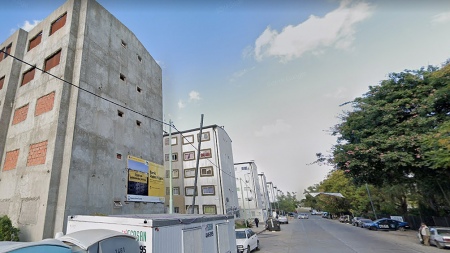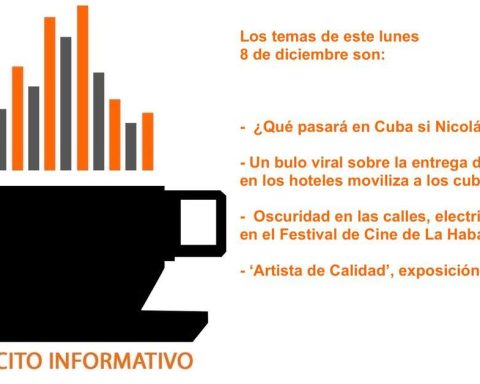The southern and northern neighborhoods of the city of Buenos Aires show marked economic and social differences, which are reflected in a gap in the levels of poverty, income, unemployment, labor formality, access to services and even in the number of inhabitants. per household, according to data reported by the Buenos Aires General Directorate of Statistics and Censuses (Dgeyc).
These figures account for this gap that, although it is historical, has deepened due to “market patterns that are very difficult to alter,” the director of Research of the Observatory of the Argentine Social Debt (ODSA) of the University told Télam. Argentine Catholic (UCA), Agustín Salvia.
In the same sense, the Buenos Aires statistical agency warned in its report that “in the homes of the southern zone the highest percentage of homes in a condition of multidimensional poverty is observed than in the rest of the city”, a situation that is exacerbated when considering that “single-person households have the highest income” and that “family households”, which, unlike the north, are the majority in the south, “are poorer”.
The official figures show this contrast: while the family per capita income was $86,215 in the second quarter throughout the district, in the northern neighborhoods it was 43.2% more ($123,446), but in the southern ones it was 42.1% less ($49,877 ), with a gap between the two extremes of 147.5% or, if preferred, a resident of the southern neighborhoods needs to work two and a half times more than one from the north to acquire the same goods and services.
The difference in the measurement of multidimensional poverty is even greater: 17.5% in the district average, 7.4% in the northern neighborhoods and 32.1% in the southern ones, 4.3 times more than at the other end of town.
Multidimensional poverty takes into account, in addition to income, variables such as food and health, basic services, housing, habitat, educational access, employment and social security.
Salvia pointed out that the north-south contrast in the city “has a long history” whose origins date back to the 1970s, when, as a result of the yellow fever epidemic, wealthy families who lived in the neighborhoods of San Telmo, Monserrat and San Nicolás, decided to settle in Barrio Norte, Recoleta, Retiro and Belgrano.
Multidimensional poverty takes into account, in addition to income, variables such as food and health, basic services, housing, habitat, educational access, employment and social security.
“Rising middle-class populations have been concentrating in certain areas of the city, from the old aristocracy that became professional middle classes, strongly linked to public administration,” said the academic.
In this displacement, he added that “they left the southern areas of the city for the occupation of migrants to the Capital, where the highest concentration of salaried, self-employed, and unemployed workers developed, producing effects of marked social inequality,” while In the downtown neighborhoods an “intermediate band, of sectors that did not belong to the old aristocracy, professionals, self-employed workers, workers, employees and wage earners with a certain qualification” was established.
The deepening of differences
“These inequalities have been reproduced over time and it makes the city grow in line with that logic”stressed Salvia, to go on to address two variables in tension: on the one hand, the attempts of successive Buenos Aires governments to promote the development of the southern zone and, on the other, a market logic that deepens the differences.
In this regard, he clarified that “it does not mean that something cannot be done, but the public policy of the city in recent years, in some cases deepened this inequality”, beyond the fact that it sought to “recover spaces that were degraded or improve the quality of life in towns, settlements and neighborhoods in the south of the city, with greater investment in urban infrastructure, housing and services”.
Investments in the north zone
“But it has also been favored – and I am not talking exclusively about this government, but in general – what we are seeing in Puerto Madero, or the urban complexes that are being developed in the north, both in the city and in the suburbs. In this way, sectors with money are encouraged to invest in real estate businesses”, completed the director of the ODSA.
In order to mitigate the situation, he proposed accentuating promotional measures from the tax side, “who are not always faced with the necessary radicalization”and in this way “promote more investments of higher quality in housing and urban planning in the poorest areas.”

“But what helps most to change all this is for people to get good jobs,” Salvia said, considering that, in the midst of the reproduction of the “market patterns” to which he referred, “jobs that are achieved for those who live in the south, for those with the lowest educational levels, are the worst, the lowest quality and with the lowest wages”.
In this regard, he warned that “If the occupational situation improves, especially for the poorest sectors, obviously that will imply that the family itself invests in improving many aspects, such as education, health, housing, habitat”.
“This requires that people have a better job and greater savings capacity, but when that does not happen, what happens to poor areas is that they become more depressed and deteriorate and many times ghettos of marginal populations are formed,” he concluded. Sage.











![[En fotos] Francisco Mosquera became champion in the World Weightlifting Championship logo rcn radio](https://latin-american.news/wp-content/uploads/2022/12/En-fotos-Francisco-Mosquera-became-champion-in-the-World-Weightlifting-1024x601.jpg)




